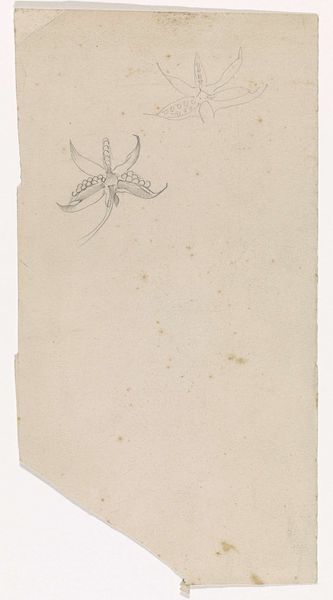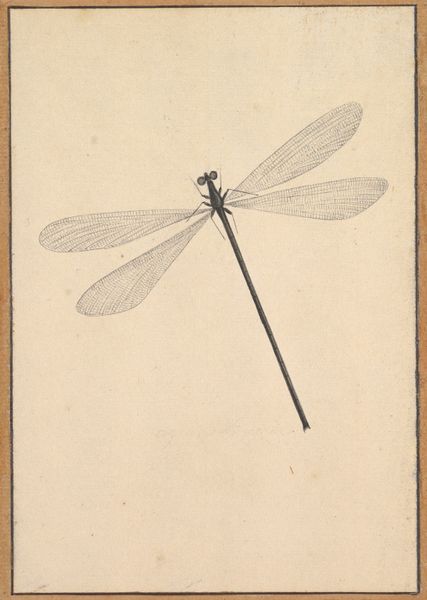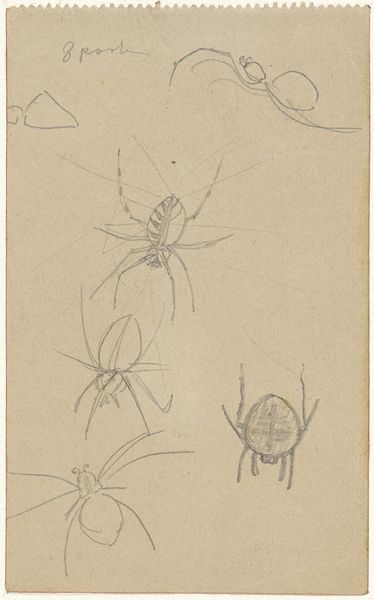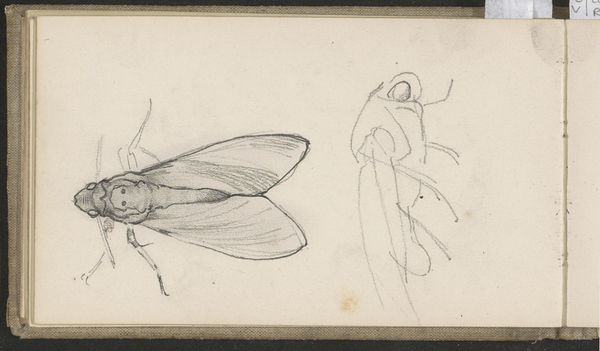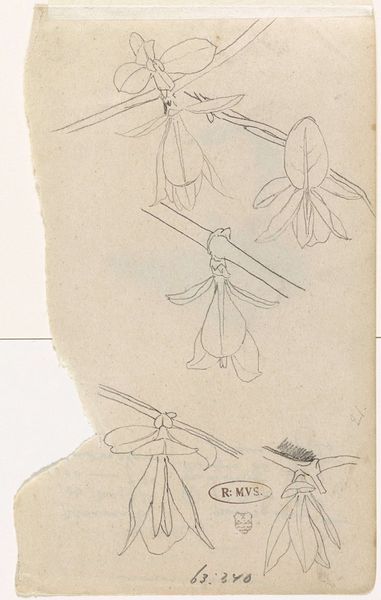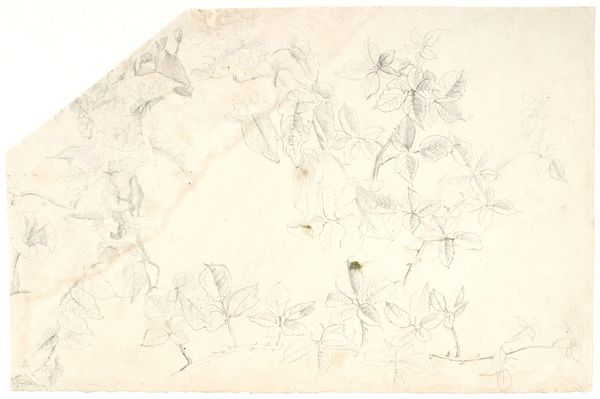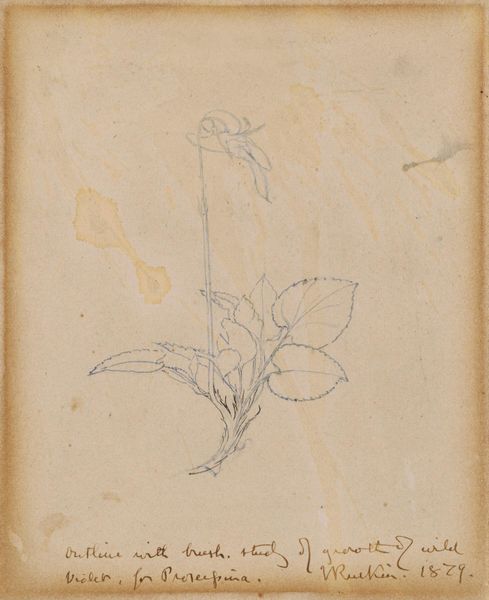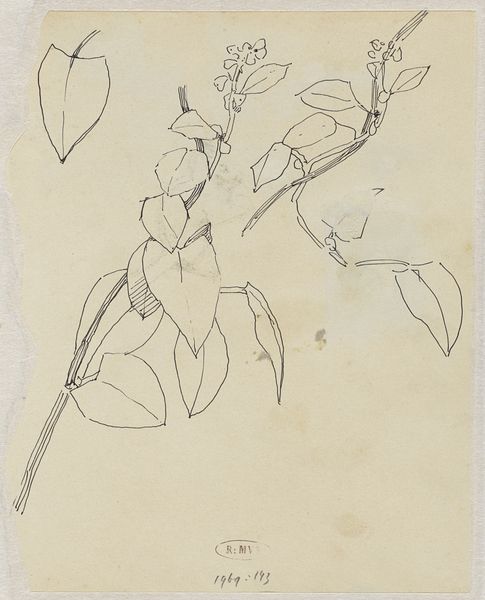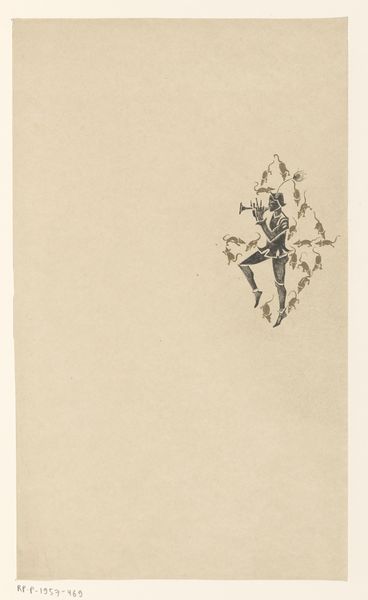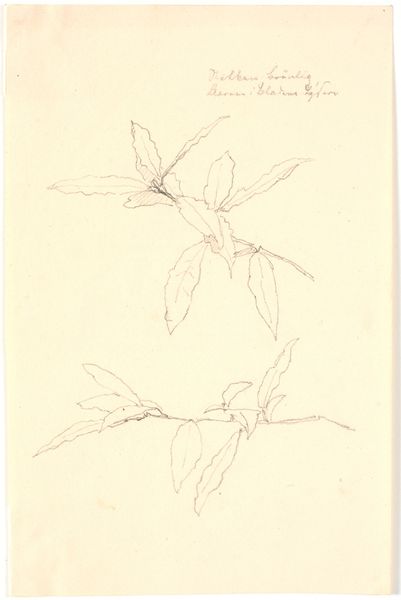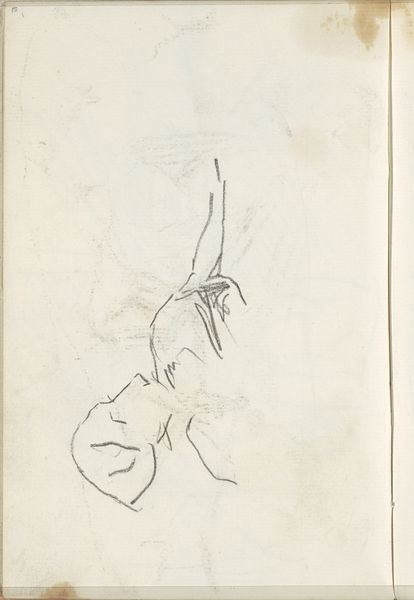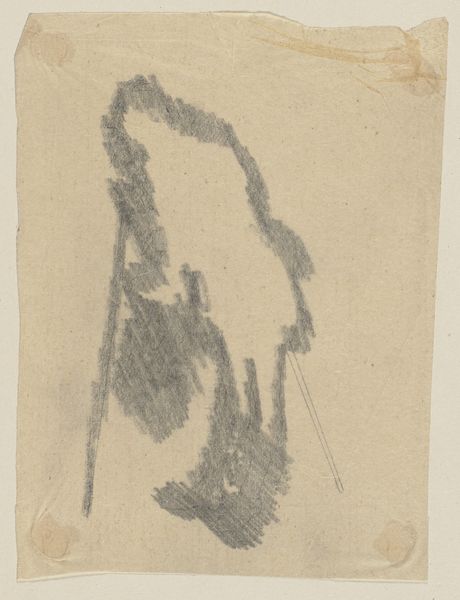
drawing, paper, pencil
#
drawing
#
landscape
#
figuration
#
paper
#
pencil
#
realism
Dimensions: height 114 mm, width 70 mm
Copyright: Rijks Museum: Open Domain
Curator: Here at the Rijksmuseum, we have on display Theo Nieuwenhuis's "Langpootmug", an artwork which roughly translates to "daddy longlegs" or "crane fly" and thought to have been created sometime between 1876 and 1951. It's a pencil drawing on paper. What's your first impression? Editor: You know, it makes me itchy just looking at it! All those spindly legs… It’s almost a study in discomfort. I wonder, was the artist tormented by these insects? It has this unfinished, immediate feeling. Like they captured a fleeting horror! Curator: That visceral reaction is interesting, given the era. Insects, and depictions of the natural world, often become coded stand-ins for larger social anxieties. Nieuwenhuis’s choice of subject matter could speak to anxieties around disease, fragility, and even societal decay prevalent at the time. Germ theory was really coming into its own. Editor: Ooh, I like that reading. Decay, unease… Yes, the fragility comes through. Look at how delicate the lines are; it's like it could disintegrate before our eyes, both the insect and the drawing. Makes you contemplate mortality, doesn’t it? Everything turning to dust. Deep, right? Curator: It certainly invites contemplation. We could also consider how class and hygiene might be entangled with these fears around disease-carrying insects. Were these long-legged flies more present in working-class neighborhoods? Did they become a symbol of that space? These associations can offer fascinating insights. Editor: Fascinating… or maybe it just bugged him! Haha! But seriously, thinking about the insect as a symbol, I'm struck by its awkwardness. It’s all elbows and knees, so relatable in its ungainliness. Perhaps the artist saw a little bit of themself in it. Aren't we all a bit clumsy sometimes? Curator: An astute observation! Finding humanity even in the smallest creatures resonates with a long tradition of using the animal world to comment on human affairs. I find that in considering gender studies it becomes clear to note a hierarchy, however, between how masculine and feminine concepts were approached and addressed through the display of animals in art. It really opens an even more exciting door to approach it. Editor: Okay, now that's given me something to really mull over. Thanks, the drawing's creepy brilliance has opened an idea for something else. Curator: Likewise! I see the drawing of a fly through an enriched lens now.
Comments
No comments
Be the first to comment and join the conversation on the ultimate creative platform.
